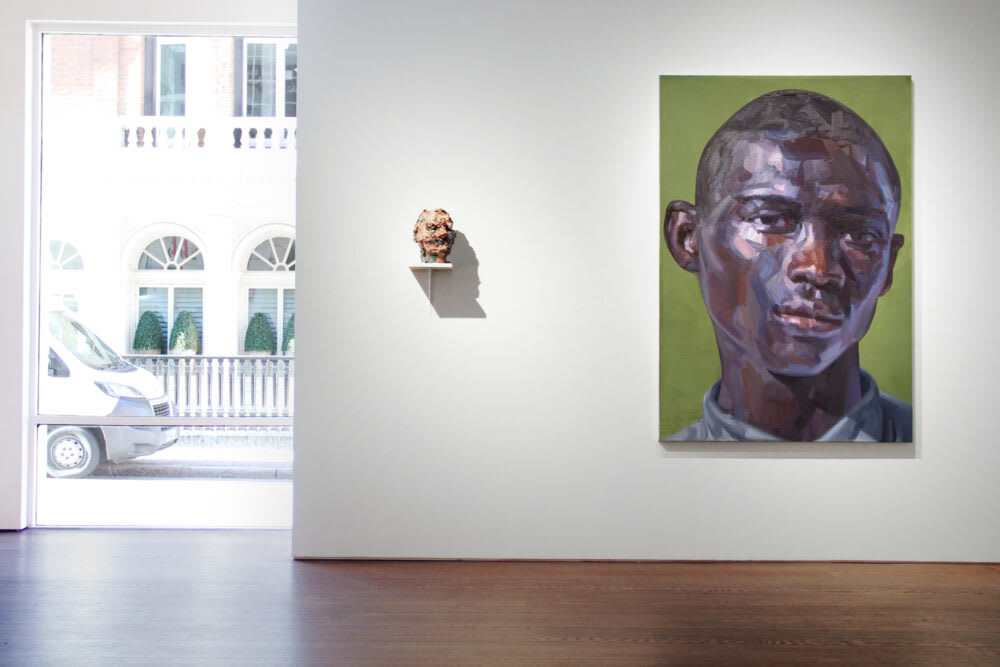Overview
In a new series of works, Tai Shan Schierenberg pursues his fascination with the symbolic and material potential of the landscape and the human figure, drawing connections between individual works through recurring patterns, rhythms and reflected motifs.
Schierenberg’s solidly constructed figurative forms verge on the edge of abstraction, appearing to dissolve at the surface into a painterly syntax of converging brushstrokes, with paint dragged, dripped and scraped to articulate opposing sensory, temporal and spatial encounters. The human body, seen here in the two balancing figures of Brother and Son or the simply composed head of Balthasar, emerges from an expressive layering of fluidly shifting planes, which simultaneously describe both the material presence of the subject and the physical act of painting.
Paintings such as Canal Summer Morning navigate the realm between recognisable views of the landscape and its abstracted shapes and patterns, conveying a sense of architectonic harmony amid the continual flux of nature. Comprising part of a long series of works representing the open and expansive Norfolk landscape, the recent paintings are characterised by their attention to duality and repetition, seen in the reflections in the water in Morning - Bend in the River, or the uncanny doubling of natural forms in Two Bushes, Norfolk.
New paintings produced on the Suffolk coast in 2016 continue this theme, following sequences of waves as they gather momentum and break against the shore, with fluid passages of paint reflecting the meditative and rhythmic energy of the waveform.
A large painting titled Quarry Road Winter - Black Forest presents a further personal symbolism, depicting the solitude of remote woodland paths in southwestern Germany, where Schierenberg spent much of his childhood. Pictured from a low and disorienting perspective, two towering boulders form an almost cathedral-like mirrored structure.
For the first time, Schierenberg will show sculptural works alongside his paintings. A new series of oil paint-encrusted three-dimensional heads, their impasto surfaces created with colours scraped daily from his painting palette, explore a fertile dialogue between painting and sculpture.



















